Dogs
Hi Julie and Mia,
Guess what? We have something in common!
Do You Believe in Dog? started as a result of you two meeting at a conference, and my latest publication also resulted from a conference-inspired, long-distance collaboration. Dr. Carri Westgarth and I met at the International Society for Anthrozoology meeting in England in 2012. We quickly realized we share both personal and professional interests in dogs. During one of our chats, I showed Carri pictures of dogs I’d worked with in a US shelter. As I flipped through the pictures, I noted out loud that many were pit bulls, and Carri responded, “We wouldn’t call most of those dogs pit bulls here in the UK.”
This conversation motivated us to conduct a study investigating differences between which dogs shelter workers in the US and UK consider pit bulls. Following the conference, Carri and I collected pictures of shelter dogs and designed a survey to learn more about shelters’ intake policies and assess how shelter workers determine breed identity. We wanted survey participants to look at pictures of shelter dogs and then tell us what breed they thought the dog was and which characteristics led them to their conclusion. Then, we had participants go through the pictures a second time and tell us whether or not they felt each dog was a pit bull.
One of the hardest parts of this project was narrowing down the pictures to just 20. We would have loved to have included more but didn’t want to make our survey so long that people became frustrated and quit before finishing. Our final set of pictures included 11 bull breeds. Twelve of the dogs were from the US, and the remaining 8 were from the UK.
We launched the survey at the end of 2012 and recruited participants via social media and an e-mail campaign directed at shelters. We ended up with responses from 416 US participants and 54 UK participants.
Eleven percent of US participants reported working in shelters that are impacted by Breed Specific Legislation (BSL). Although all UK shelters are impacted by BSL due to the Dangerous Dog Act, the survey results indicated that not all UK shelter workers were aware of this. That surprised us!
We were even more surprised by participants’ thoughts regarding which dogs were pit bulls. Over half of US participants considered 7 of the 20 dogs to be pit bulls, whereas over half of UK participants considered only 1 of the dogs to be a pit bull. Furthermore, US participants were significantly more likely than UK participants to consider 12 of the dogs to be pit bulls.
When we provided participants with a list of 10 bull breed and Mastiff breed names and asked if they considered any of these breeds to be pit bulls, US participants were more likely than UK participants to say that 6 of the breeds were. The biggest discrepancy between US and UK participants’ responses was regarding the Staffordshire bull terrier. Two percent of UK participants considered this breed to be a pit bull, whereas 69% of US participants did!
Carri and I were astonished by how much UK and US shelter workers’ perceptions of what a pit bull looks like differed. We also were surprised by how much disagreement there was amongst shelter workers within our respective countries. We thought about how many times we have seen news reports that identify aggressive dogs as "pit bulls" and how infrequently pictures of the impounded dogs accompany these articles. It made us wonder how much of the pit bull’s reputation is affected by dogs being identified as pit bulls in one location, even though they may not be considered pit bulls elsewhere.
We tried to figure out why there is so much disagreement regarding what a pit bull dog is and concluded it may in part be because the American Kennel Club and the UK’s Kennel Club do not have breed standards for the pit bull or American pit bull terrier (although the United Kennel Club does!). According to the UK’s Dangerous Dog Act, a pit bull dog is one that meets the physical features described for pit bulls in a 1977 issue of the American periodical Pit Bull Gazette. American pit bull terriers and American Staffordshire terriers fall under the UK’s definition of a pit bull. Notably, Staffordshire bull terriers are not classified as pit bull dogs in the UK, although as our results showed, they tend to be considered pit bulls in the US.
One might wonder if our findings indicate there should be alternative ways of identifying shelter dogs. Recently, there has been a push to label US shelter dogs of unknown lineages as American shelter dogs, but based on our survey results, this strategy has not taken off. Perhaps, at least, our findings will inspire people to question the morality and efficacy of legislation that is based on a dog’s appearance, particularly when disagreement is so pervasive.

Christy Hoffman, PhD
Assistant Professor
Department of Animal Behavior,
Ecology, and Conservation
Canisius College
Further reading:
Hoffman C.L., Harrison N., Wolff L. & Westgarth C. (2014). Is That Dog a Pit Bull? A Cross-Country Comparison of Perceptions of Shelter Workers Regarding Breed Identification, Journal of Applied Animal Welfare Science, 1-18. DOI: 10.1080/10888705.2014.895904
Voith, V. L., Trevejo, R., Dowling-Guyer, S., Chadik, C., Marder, A., Johnson, V., & Irizarry, K. (2013). Comparison of visual and DNA-based breed identification of dog and inter-observer reliability. American Journal of Sociological Research, 3(2), 17–29. DOI: 10.5923/j.sociology.20130302.02
Marder A. & Voith V. (2010). The American Shelter Dog: Identification of dogs by personality, Journal of Veterinary Behavior: Clinical Applications and Research, 5 (1) 26. DOI: 10.1016/j.jveb.2009.10.036
Voith V.L., Ingram E., Mitsouras K. & Irizarry K. (2009). Comparison of Adoption Agency Breed Identification and DNA Breed Identification of Dogs, Journal of Applied Animal Welfare Science, 12 (3) 253-262. DOI: 10.1080/10888700902956151
Relevant links on breed and breed identification:
Dangerous Dogs Act (UK): http://archive.defra.gov.uk/wildlife-pets/pets/cruelty/documents/ddogslawyouleaflet.pdf
Description of the physical features of a pit bull type dog based on the 1977 issue of the Pit Bull Gazette: http://archive.defra.gov.uk/wildlife-pets/pets/cruelty/documents/dogs-guide-enforcers.pdf (p.14)
American Kennel Club: http://www.akc.org/
Kennel Club: https://www.thekennelclub.org.uk/
United Kennel Club: http://www.ukcdogs.com/Web.nsf/WebPages/Home
© Do You Believe in Dog? 2014
- Taming An Aggressive Pit Bull Puppy
The pit bull breed is highly social and not innately aggressive towards humans. "...Many people consider that it must be crucial to get dog training tips earlier to having their pets. A number of people could find this interesting but a lot of people...
- The American Pit Bull Terrier (apbt)
HistoryThe American Pit Bull Terrier (APBT) is a medium-sized, solidly built, short haired dog whose early ancestors came from England and Ireland. It is a member of the molosser breed group. The American Staffordshire Terrier and the American Pit Bull...
- Keeping Your Pit Bull Socialized And Friendly
Pit Bulls are naturally friendly dogs. They are smart, loyal and highly trainable. The key to having a friendly pit bull is to be friendly yourself. You must be a cheerful and loving pet parent in order to have a friendly and loving pet.If you are a person...
- Breed-specific Legislation Targets Innocent Pups
Tax dollars would be better used for prevention. Educate people, enforce leash laws and licenses, set up a fund to allow owners cheaper options to spay or neuter a pet. Dogs who are not spayed or neutered are twice more likely to be aggressive. Dogs that...
- Pit Bull Dog
Pit Bull DogSummary: Pit bull Dog is a dog from American terrier breed. Pit bull is a big headed dog with cropped ears. It is also known as American pit bull terrier. Article: Bighead, round tiny sharp eyes, cropped ears with fearless gestures; this...
Dogs
Isn't it a Pitty? USA & UK shelter worker differences in Pit Bull identification
Hi Julie and Mia,
Guess what? We have something in common!
Do You Believe in Dog? started as a result of you two meeting at a conference, and my latest publication also resulted from a conference-inspired, long-distance collaboration. Dr. Carri Westgarth and I met at the International Society for Anthrozoology meeting in England in 2012. We quickly realized we share both personal and professional interests in dogs. During one of our chats, I showed Carri pictures of dogs I’d worked with in a US shelter. As I flipped through the pictures, I noted out loud that many were pit bulls, and Carri responded, “We wouldn’t call most of those dogs pit bulls here in the UK.”
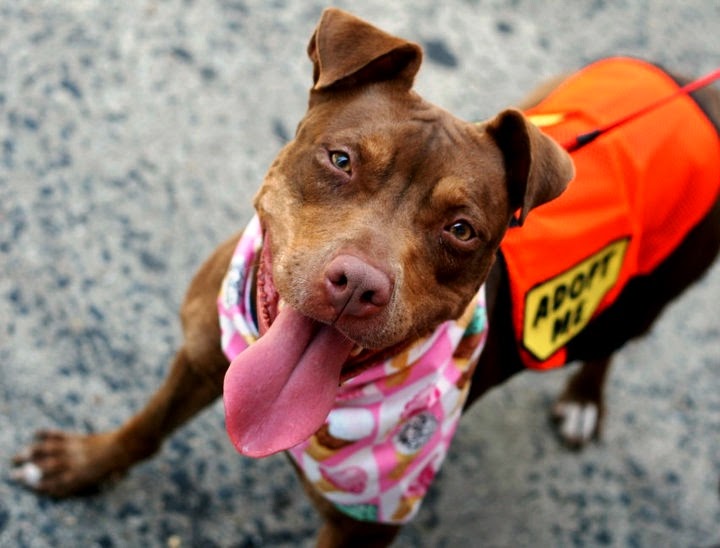 |
| Flickr/denial_land |
This conversation motivated us to conduct a study investigating differences between which dogs shelter workers in the US and UK consider pit bulls. Following the conference, Carri and I collected pictures of shelter dogs and designed a survey to learn more about shelters’ intake policies and assess how shelter workers determine breed identity. We wanted survey participants to look at pictures of shelter dogs and then tell us what breed they thought the dog was and which characteristics led them to their conclusion. Then, we had participants go through the pictures a second time and tell us whether or not they felt each dog was a pit bull.
One of the hardest parts of this project was narrowing down the pictures to just 20. We would have loved to have included more but didn’t want to make our survey so long that people became frustrated and quit before finishing. Our final set of pictures included 11 bull breeds. Twelve of the dogs were from the US, and the remaining 8 were from the UK.
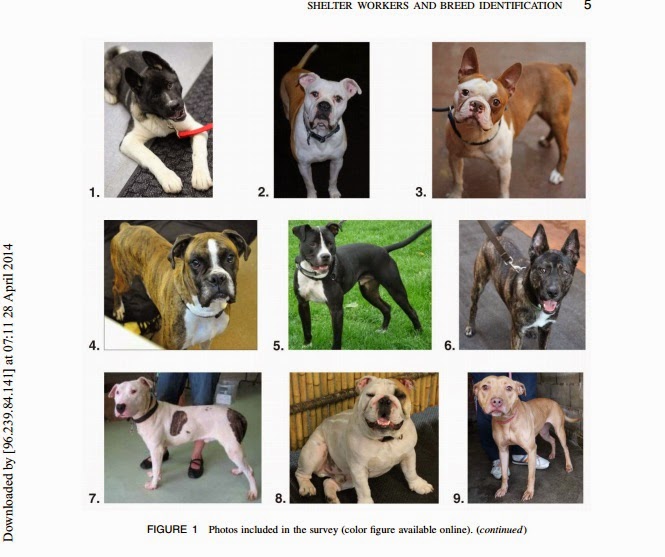 |
| Some of the dogs used in our survey (excerpt from publication) |
Eleven percent of US participants reported working in shelters that are impacted by Breed Specific Legislation (BSL). Although all UK shelters are impacted by BSL due to the Dangerous Dog Act, the survey results indicated that not all UK shelter workers were aware of this. That surprised us!
 |
| Flickr/hand-nor-glove |
We were even more surprised by participants’ thoughts regarding which dogs were pit bulls. Over half of US participants considered 7 of the 20 dogs to be pit bulls, whereas over half of UK participants considered only 1 of the dogs to be a pit bull. Furthermore, US participants were significantly more likely than UK participants to consider 12 of the dogs to be pit bulls.
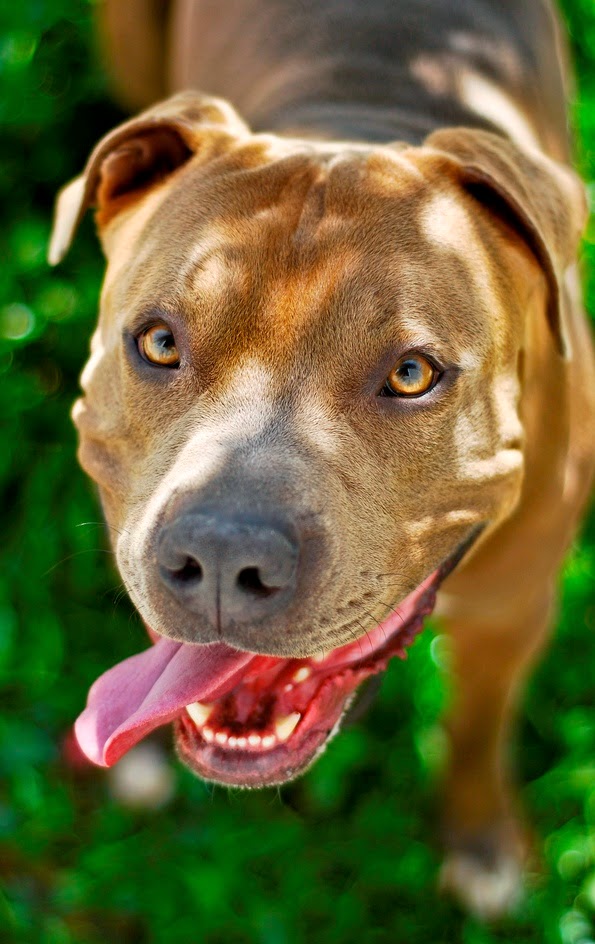 |
| Flickr/actionkat13 |
Carri and I were astonished by how much UK and US shelter workers’ perceptions of what a pit bull looks like differed. We also were surprised by how much disagreement there was amongst shelter workers within our respective countries. We thought about how many times we have seen news reports that identify aggressive dogs as "pit bulls" and how infrequently pictures of the impounded dogs accompany these articles. It made us wonder how much of the pit bull’s reputation is affected by dogs being identified as pit bulls in one location, even though they may not be considered pit bulls elsewhere.
We tried to figure out why there is so much disagreement regarding what a pit bull dog is and concluded it may in part be because the American Kennel Club and the UK’s Kennel Club do not have breed standards for the pit bull or American pit bull terrier (although the United Kennel Club does!). According to the UK’s Dangerous Dog Act, a pit bull dog is one that meets the physical features described for pit bulls in a 1977 issue of the American periodical Pit Bull Gazette. American pit bull terriers and American Staffordshire terriers fall under the UK’s definition of a pit bull. Notably, Staffordshire bull terriers are not classified as pit bull dogs in the UK, although as our results showed, they tend to be considered pit bulls in the US.
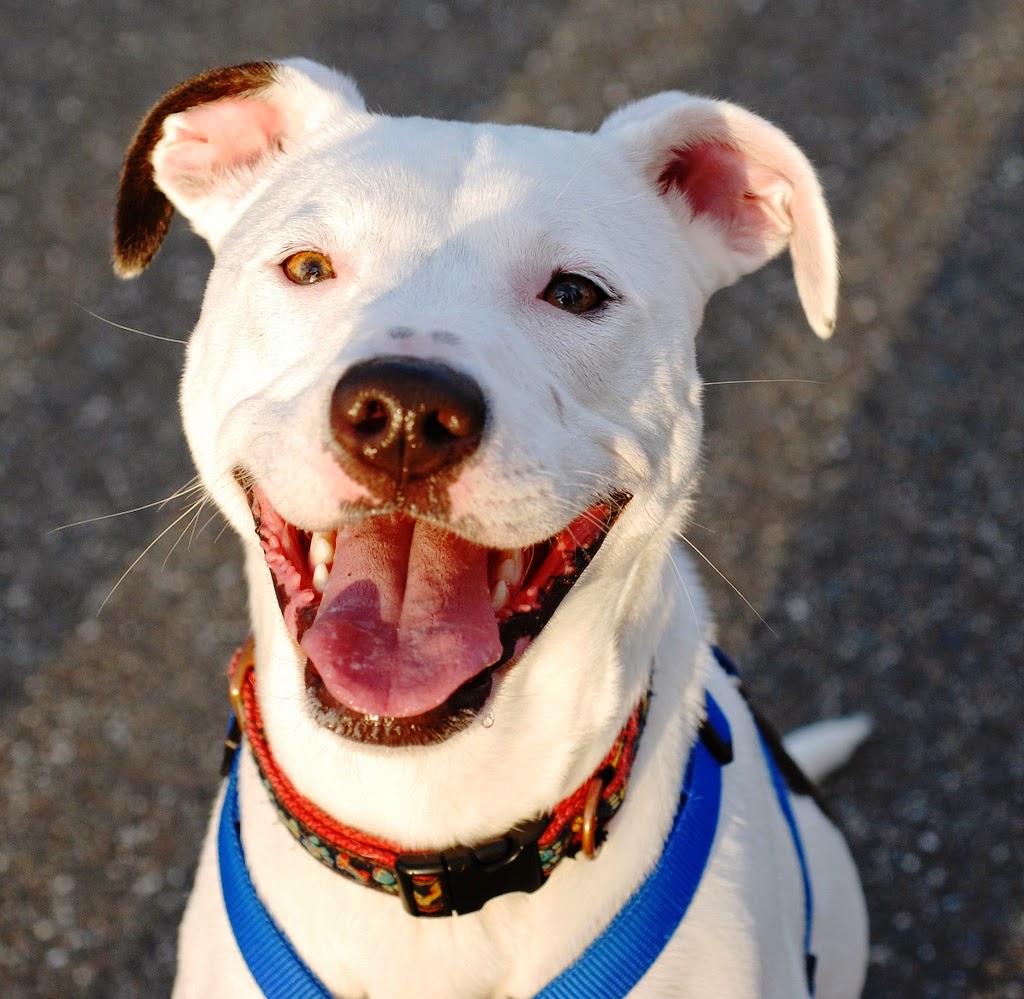 |
| Flickr/eileen_mcfall |

Christy Hoffman, PhD
Assistant Professor
Department of Animal Behavior,
Ecology, and Conservation
Canisius College
Further reading:
Hoffman C.L., Harrison N., Wolff L. & Westgarth C. (2014). Is That Dog a Pit Bull? A Cross-Country Comparison of Perceptions of Shelter Workers Regarding Breed Identification, Journal of Applied Animal Welfare Science, 1-18. DOI: 10.1080/10888705.2014.895904
Voith, V. L., Trevejo, R., Dowling-Guyer, S., Chadik, C., Marder, A., Johnson, V., & Irizarry, K. (2013). Comparison of visual and DNA-based breed identification of dog and inter-observer reliability. American Journal of Sociological Research, 3(2), 17–29. DOI: 10.5923/j.sociology.20130302.02
Marder A. & Voith V. (2010). The American Shelter Dog: Identification of dogs by personality, Journal of Veterinary Behavior: Clinical Applications and Research, 5 (1) 26. DOI: 10.1016/j.jveb.2009.10.036
Voith V.L., Ingram E., Mitsouras K. & Irizarry K. (2009). Comparison of Adoption Agency Breed Identification and DNA Breed Identification of Dogs, Journal of Applied Animal Welfare Science, 12 (3) 253-262. DOI: 10.1080/10888700902956151
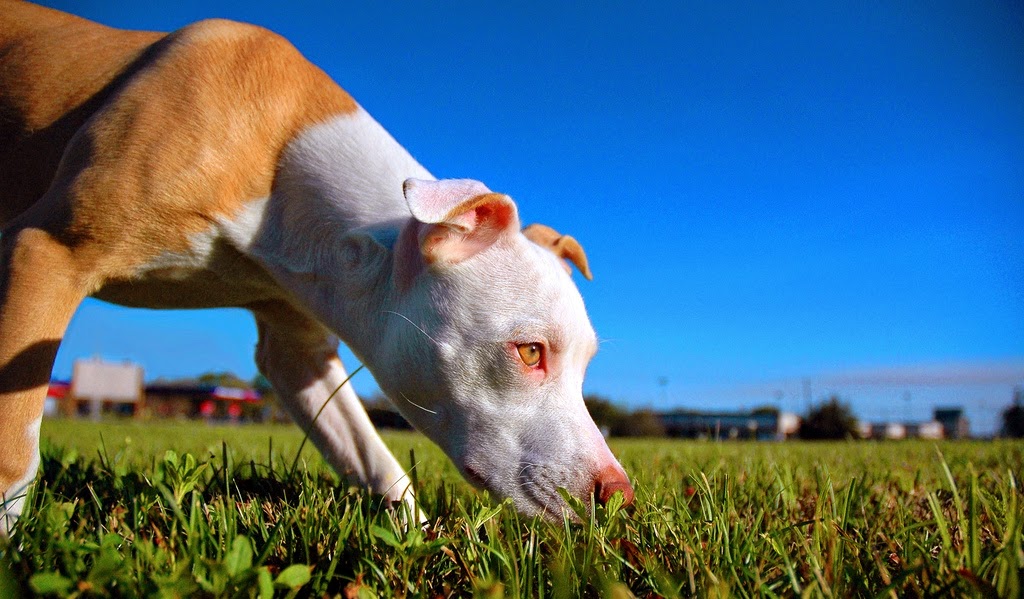 |
| Flickr/jasonbacon |
Relevant links on breed and breed identification:
Dangerous Dogs Act (UK): http://archive.defra.gov.uk/wildlife-pets/pets/cruelty/documents/ddogslawyouleaflet.pdf
Description of the physical features of a pit bull type dog based on the 1977 issue of the Pit Bull Gazette: http://archive.defra.gov.uk/wildlife-pets/pets/cruelty/documents/dogs-guide-enforcers.pdf (p.14)
American Kennel Club: http://www.akc.org/
Kennel Club: https://www.thekennelclub.org.uk/
United Kennel Club: http://www.ukcdogs.com/Web.nsf/WebPages/Home
© Do You Believe in Dog? 2014
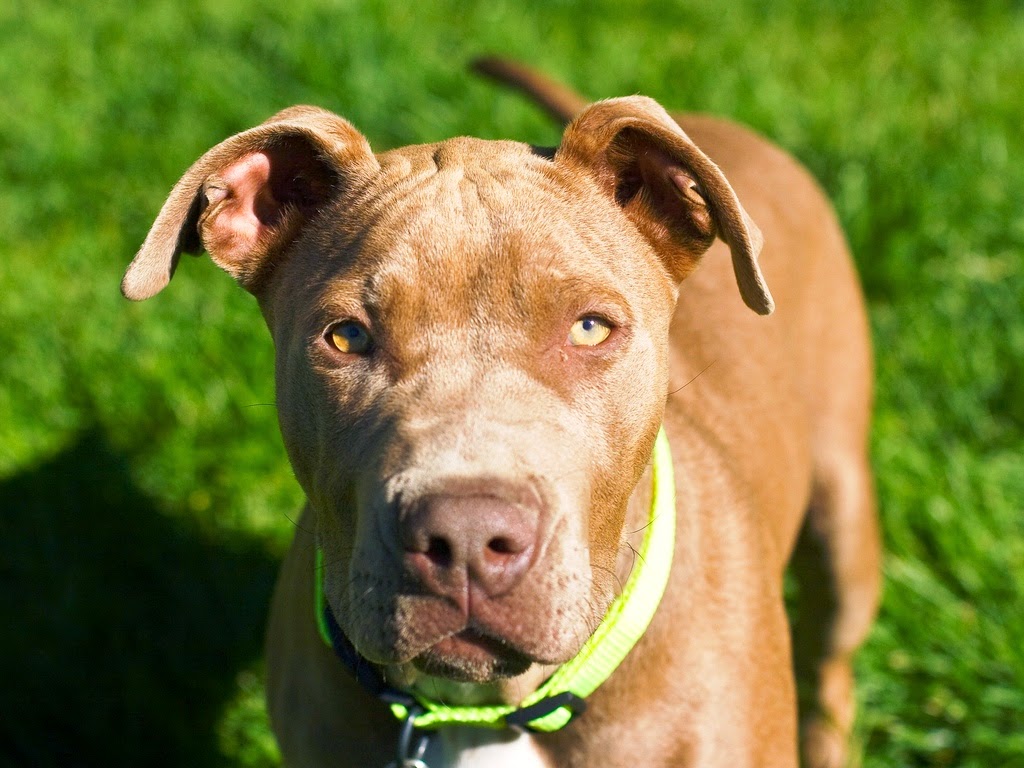 |
| Flickr/jenorton |
- Taming An Aggressive Pit Bull Puppy
The pit bull breed is highly social and not innately aggressive towards humans. "...Many people consider that it must be crucial to get dog training tips earlier to having their pets. A number of people could find this interesting but a lot of people...
- The American Pit Bull Terrier (apbt)
HistoryThe American Pit Bull Terrier (APBT) is a medium-sized, solidly built, short haired dog whose early ancestors came from England and Ireland. It is a member of the molosser breed group. The American Staffordshire Terrier and the American Pit Bull...
- Keeping Your Pit Bull Socialized And Friendly
Pit Bulls are naturally friendly dogs. They are smart, loyal and highly trainable. The key to having a friendly pit bull is to be friendly yourself. You must be a cheerful and loving pet parent in order to have a friendly and loving pet.If you are a person...
- Breed-specific Legislation Targets Innocent Pups
Tax dollars would be better used for prevention. Educate people, enforce leash laws and licenses, set up a fund to allow owners cheaper options to spay or neuter a pet. Dogs who are not spayed or neutered are twice more likely to be aggressive. Dogs that...
- Pit Bull Dog
Pit Bull DogSummary: Pit bull Dog is a dog from American terrier breed. Pit bull is a big headed dog with cropped ears. It is also known as American pit bull terrier. Article: Bighead, round tiny sharp eyes, cropped ears with fearless gestures; this...
